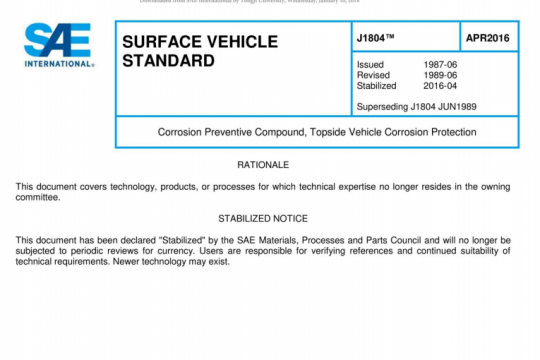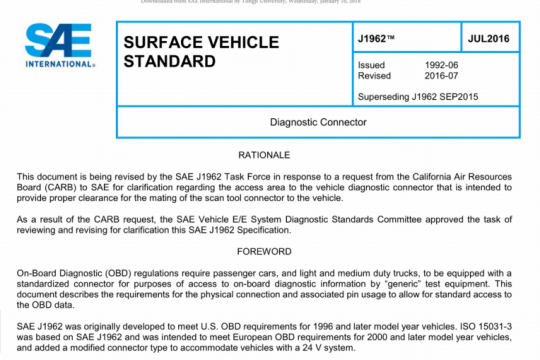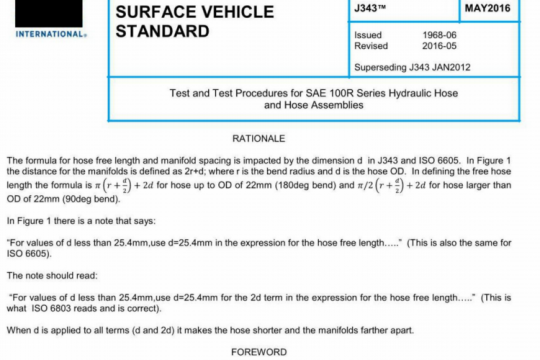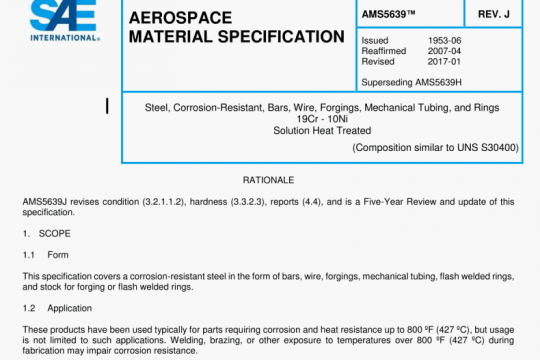SAE J2310:2019 pdf free
SAE J2310:2019 pdf free.Rectangular Cross Section Polymeric Sealing Rings
Polymeric sealing rings are made from various materials as described in the following paragraphs. These base polymer materials may be compounded with a variety of fller types to achieve specific performance properties, such as increased resistance to wear and temperature and improved fluids compatability. Other desirable properties include reduced abrasion of mating components, reduced friction, increased strength, and resistance to damage. Examples of fllers include glass,graphite, and various polymers. Factors to be considered when choosing a material include application temperature, fluid type and pressure, contaminant exposure, configuration (solid or split), material interfaces, and assembly issues.
These materials are normally sintered from powders which have been compacted/molded to specific sizes under extreme pressure.’ The materials are sintered to promote specific mechanical properties, crystallinity, and shape memory. The sintered materials are then cut into rings of specific dimensions, and can be split or left as a solid ring, depending on assembly and functional requirements. Solid rings must be stretched to install over the shaft diameter. If stretched, then a subsequent sizing operation may be required depending on the recovery rate of the material.
These materials are typically compression molded into the desired size and shape. Polyimide rings have a higher elasticity modulus than PTFE and also provide higher strength and tolerance to deformation under pressure. Due to the high modulus of polyimide, these rings must be split to install over the shaft diameter.
For a regular rectangular seal ring, it is recommended that sealing ring radial wall thickness not exceed the axial width shown in Table 2. Radial wall thickness (T) typically should be 90% of the axial width for proper function, ease of assembly,and to minimize the required groove depth (see 4.8). However, many common seal ring shapes are no longer rectangular.Manufacturers are introducing chamfers/cutouts on the left and right edges of the seal. Those feaures are meant to reduce the frictional torque between the seal and the side of the groove. Reduction in friction toque will increase the overall efficiency of the system. The chamfers/cutouts also eliminate the possbility of the seal interaction with the bottom corners of the groove root.SAE J2310 pdf free download.




